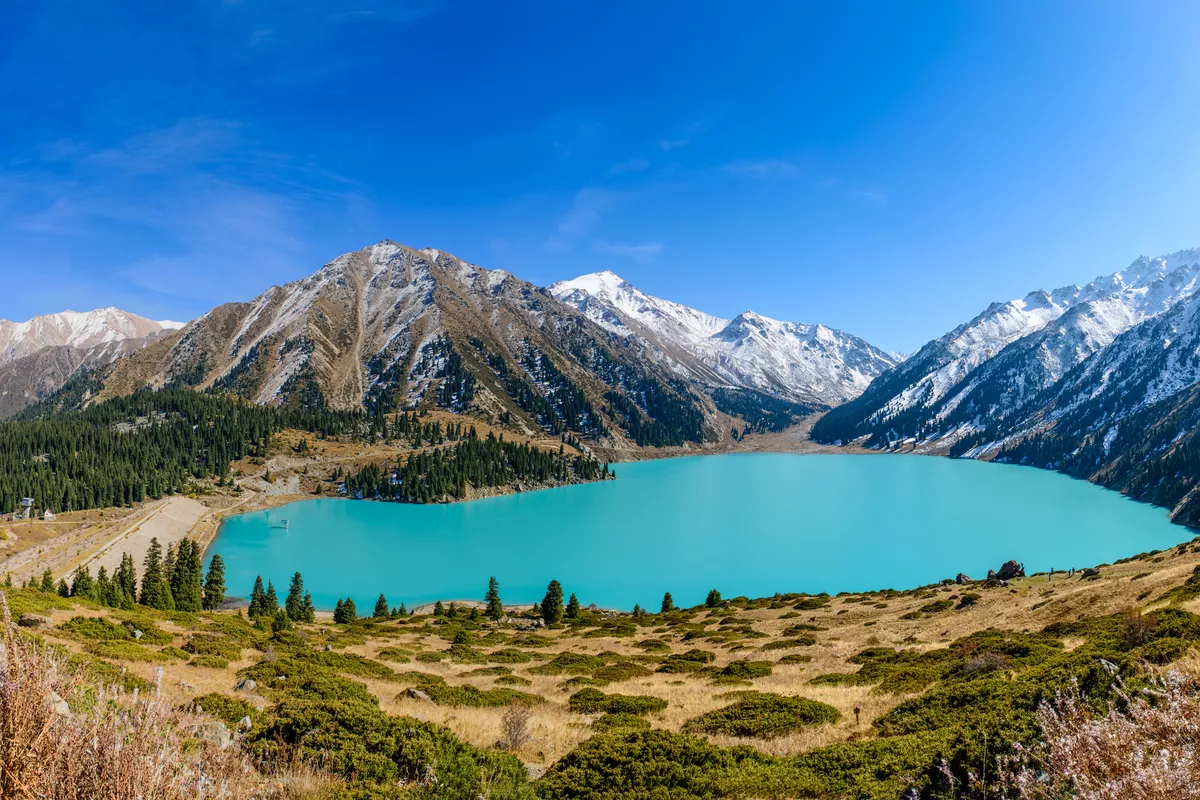
Getty images
As glaciers melt and river flows decline, Central Asia is confronting an escalating water crisis that is challenging regional cooperation, climate resilience, and governance capabilities.
Kazakhstan, the region’s largest country by landmass and a key downstream player, has moved to the forefront of efforts to address the mounting environmental and geopolitical pressures, The Caspian Post reports citing foreign media.
More than 44 per cent of Kazakhstan’s river water originates from outside its borders, flowing in from upstream neighbours like China, Kyrgyzstan and Tajikistan.
With climate change accelerating glacial retreat in the Tian Shan and Altai ranges, and water-intensive agriculture still dominant, the country faces complex challenges in balancing domestic needs with fragile transboundary relations.
Profound effects
The latest UN World Water Development Report 2025 warns of severe impacts if current trends continue.
Bhanu Neupane of UNESCO’s Division of Water Sciences said, “The report reminds us that the fate of mountains and glaciers is somehow intertwined with the fate of humanity. These are not distant environmental concerns, but existential issues.”
In Kazakhstan’s southern regions, glacier melt accounts for up to 90 per cent of river flow, critical for irrigation and drinking water alike. The country’s water-intensive sectors, particularly agriculture, contribute heavily to the strain.
“This figure is even higher than 72 per cent for agricultural uses in Kazakhstan… while placing mounting pressure around snow and glacier-fed rivers like Syrdarya and Illi,” Neupane added.
Reforms to support adaptation
To meet this challenge, Kazakhstan is undertaking sweeping reforms.
At the Astana International Forum in May, Deputy Prime Minister Kanat Bozumbayev announced major infrastructure investments, including 42 new reservoirs, 30 reconstructions and the overhaul of more than 14,000 kilometres of irrigation canals.
A new digital water platform, hydro.gov.kz, will centralise real-time data. Subsidies for water-saving technologies such as sprinkler and drip irrigation systems have been raised to 80 per cent.
“Kazakhstan views water not only as a natural resource, but also as a powerful driver of cooperation, sustainable development and regional stability,” Bozumbayev stated.
In June, the country also adopted a new Water Code, seen as a legislative turning point. It introduces concepts such as “water security” and “ecological flow”, mandates basin-level planning, and strengthens protections for small rivers, glaciers and wetlands.
“These are the recognition of water as an integral part of the environment, the basis of citizens’ life and economic development… the introduction of water-saving technologies and adaptation to climate change,” explained Water Resources Minister Nurzhan Nurzhigitov.
Regional collaboration
Across the region, cooperation is gaining new momentum. The five Central Asian states reached a new water-sharing agreement for the Syr Darya and Amu Darya rivers.
Tajikistan, which holds more than half of the region’s glaciers, is leading with investments in early warning systems and nature-based solutions. This includes glacial lake monitoring, slope reforestation and pilot solar-powered drip irrigation systems in highland farms.
Digital tools are also transforming management.
River basin forecasting platforms now integrate climate, hydrological and crop data, allowing basin authorities in Kazakhstan and Uzbekistan to optimise irrigation schedules and reservoir releases.
Still, gaps remain in cross-border sharing and governance. “Water does not stop at borders - but the data often does,” regional experts warned in a recent opinion piece.
Support from international partners
The European Union is playing a key supporting role. At the 17th Kazakhstan-EU Dialogue Platform in June, both sides reaffirmed their commitment to sustainable water management.
Germany pledged support for transboundary cooperation under the Green Central Asia initiative, while the Netherlands proposed a desalination plant in Aktau and a regional flood early warning system.
The United Nations Development Programme (UNDP) is also investing heavily in resilience. Following the devastating floods in 2024, it supported the launch of a flood early warning system for key basins and is now expanding it to include drought forecasting.
In partnership with local authorities, the UN agency has helped develop water management plans for Lake Balkhash and secured climate finance for dam safety, including a $2 million grant from Japan.
The Asian Development Bank’s ‘Glaciers to Farms’ programme, which aims to mobilise up to $3.5 billion in regional investments, supports this transition. ADB Director Yasmin Siddiqi stressed the need for smarter infrastructure and shared incentives.
“Future investment must avoid repeating past mistakes. They must result in less water use overall through efficiency gains. We need smarter water infrastructure,” she said, calling for immediate action in the region.
As Central Asia races to adapt to a future shaped by climate volatility and shrinking glaciers, Kazakhstan’s efforts demonstrate both the promise and the complexity of developing sustainable solutions.
Whether it is building dams, rewriting laws or digitising river management, the success of one country is inseparable from the fate of its neighbours.
Share on social media
